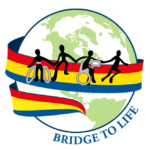Bridging Communities Through Alternative Communication (BCTAC) is a diverse group of people with unique abilities who come together in social, educational and recreational activities to share experiences and ideas, collaborate to plan meaningful events, and develop ways to raise awareness of individuals who use Augmentative and Alternative Communication (AAC).
BCTAC‘s vision is to be a voice that reaches across communities. Members are committed to making a difference not only in their own lives, but also in the lives of other individuals who use AAC. Members play a central role in designing, operating, and monitoring the program and are dedicated to continuously building and expanding self-advocacy skills, self-awareness, and self-determination.
BCTAC’s goal is for individuals who use AAC to have a place to meet friends, share stories and experiences, learn from each other and form a support network of people and resources as they:
- Expand the level of involvement in group activities and leadership roles
- Achieve greater community involvement
- Assume greater autonomy in group activities
- Support others in the group as they strive towards their own personal goals
- Educate others on how to interact with AAC users
- Produce publications or web materials that will benefit the community at large (e.g., accessible restaurants, events, and activities)
- Influence the way people think about disabilities
- Sponsor speakers and panel members who will assist in furthering support and self-advocacy
- Build positive and productive group dynamics
- Create a collaborative environment where group members can alternately take initiative and/or lend support, based on the specific activities
BCTAC‘s core values are: Community; Equality; Independence; Determination; Perseverance; Integrity; Cooperation; Collaboration; Participation; Communication; Impact; Influence; Awareness; Balance; Expression; Support; Pursuit of dreams/goals; Decision making.
BCTAC is comprised of members, Co-Presidents, the Leadership Committee and the Coordinator of Activities and Events. The Leadership Committee and the Coordinator of BCTAC identify goals and objectives for each activity. Activity goals and objectives align with the mission and vision of the group. Because BCTAC is a community, members of the group function as a team and work in a collaborative model. Everyone has a unique contribution, role and voice within this team. For complete information about membership, check out the Cooperative section.
Watch the BCTAC Full Length Promotional Video!
If you would like to be added to the BCTAC mailing list and receive notification of upcoming events, email bctac@bridgeschool.org.


